Tim Henman: ‘Whenever I stand on a tennis court now, I think I’d much rather be playing golf’
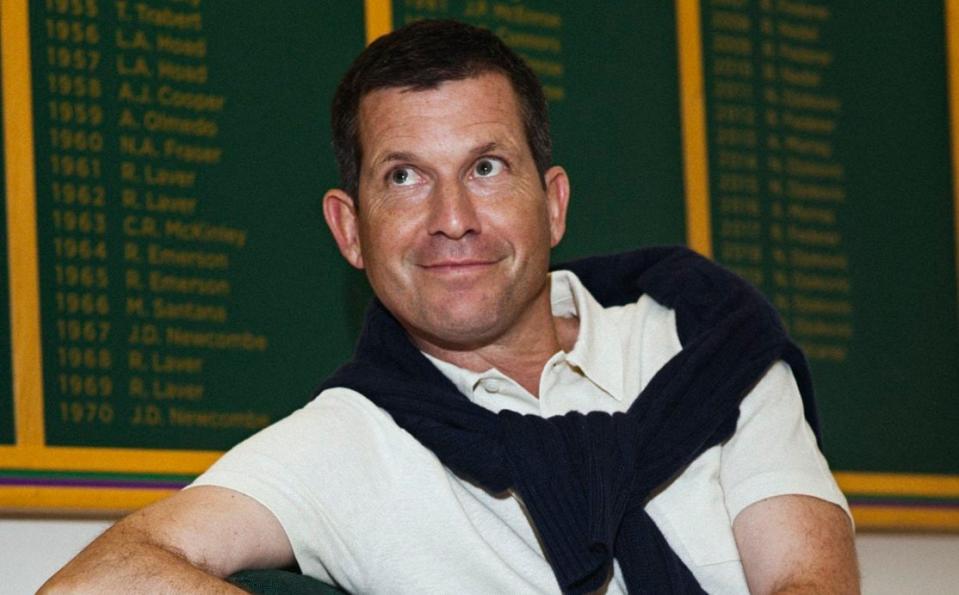
So what, I ask Tim Henman, was he thinking on the morning of Sunday, September 23 2007, when he woke up knowing that his professional tennis career was over.
“I can remember exactly,” he says without a moment’s hesitation. Firm handshake, unwavering eye contact, a man as much on the front foot in conversation as he was as a player on the court. Tiger Tim, Britain’s great tennis hope for 15 years, Grand Slam semi-finalist six times, four of them at Wimbledon, so beloved at the sport’s greatest and most prestigious arena that they named a hill after him.
“Actually, there were two mornings,” he says.
The occasion was the series of matches between Great Britain and Croatia in the Davis Cup at Wimbledon. On the Friday, Henman had played and won his singles match, and the following day he partnered Jamie Murray to another victory in the men’s doubles.
“That night we had a big dinner in London. So on Sunday morning I probably felt a little worse for wear, but I didn’t have to play, because that day they were dead rubbers.
“We’d just had our third child, Grace, two weeks before that. We had Rosie and Olivia, who were five and three at the time. And I remember, I took them to nursery. Came back home. We had two black Labradors, so I thought, ‘I’m going to take them for a long walk now and just contemplate where I’m at.’ And as I set off on the walk I felt like the world had been lifted off my shoulders.”
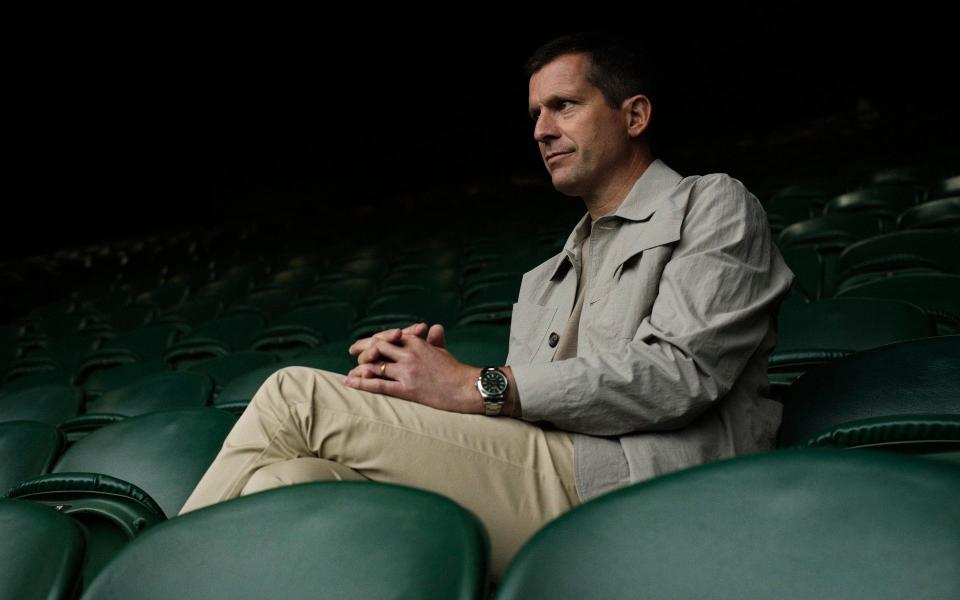
We are sitting in the Rolex suite at Wimbledon. Henman, a youthful-looking 49, is dressed in the retired sportsman’s uniform of chinos and zip-up sweater, a glass of sparkling water on the table in front of him.
Rolex has been the official timekeeper for Wimbledon since 1978. There can be few better examples of effective sponsorship and branding. Every time a camera shot focuses on the scoreboard on any Wimbledon court, the Rolex clock is there.
He has been a “testimonee” for the watch brand since 2013. Decorating the suite are portraits of the elite group of tennis players who are his fellow “testimonees” – Chris Evert, Iga Swiatek, Carlos Alcaraz, Björn Borg (the man who first inspired Henman to become a tennis player) and Roger Federer, who he considers the greatest player ever to grace Centre Court.
Henman played Federer 13 times, winning six and losing seven. He could tell you the details of every match, every stroke. “I can remember matches I played when I was under eight. All the bad line calls I got.”
And you’re still angry. He laughs.
Henman says that what defines Wimbledon for him is “its history and tradition – and now we have innovation – but that goes back to grass courts, predominantly white clothing. Centre Court, the Royal Box…” In short, an occasion that is quintessentially English – something that might be said of Henman himself.
He is the product of an affluent middle-class background; his father, Tony, who died shortly before my interview with Henman, was a solicitor and a sporting all-rounder, ever present in the Centre Court stands at his son’s Wimbledon appearances, immaculately dressed in blazer and tie, his craggy features fixed, as one tennis correspondent put it, in an expression of “magnificent, inscrutable calm, which became one of the great British performances of the fortnight”.
Henman grew up in Oxfordshire, the youngest of three sons, all of whom were encouraged to excel at all sports, from football to hockey, cricket to squash.
But it was tennis – and Wimbledon – that was in his blood. In 1901 his maternal great-grandmother, Ellen Stawell-Brown, was reputedly the first woman to serve overarm at Wimbledon. His maternal grandmother, Susan Billington, appeared regularly at Wimbledon in the 1950s, playing mixed doubles on Centre Court with her husband, Henry, as well as reaching the third round of the ladies’ doubles in 1951, 1955 and 1956.
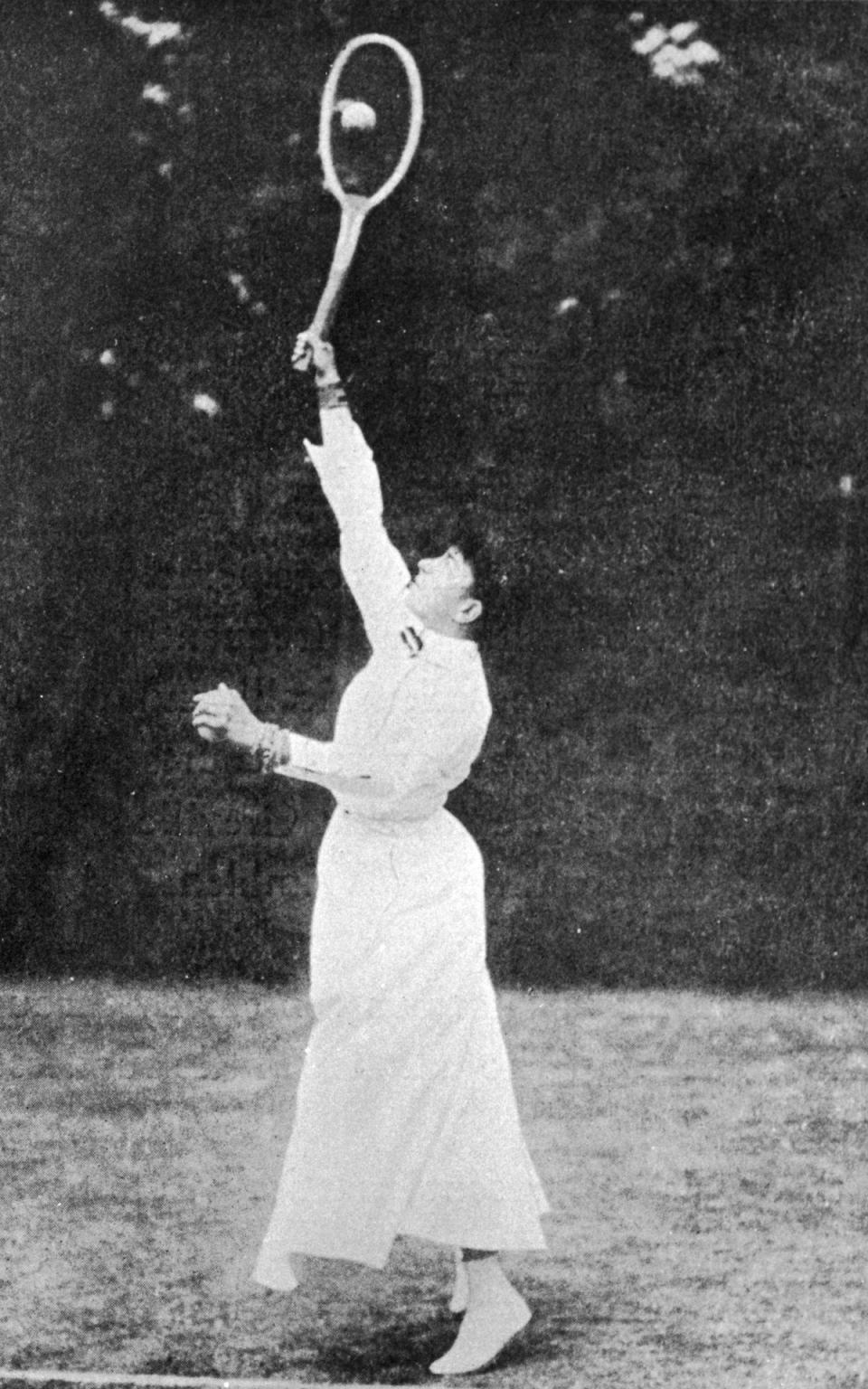
At the age of six, Henman was taken to Wimbledon by his mother to watch Björn Borg play on Centre Court. “I’ve still got the ticket; I can remember what I was wearing, where I was sitting,” he says. “And that was when I made my one and only career decision: tennis was what I wanted to do.”
At the age of 11 he won a scholarship to the private Reed’s School in Cobham, paid for by the Slater Squad, a group funded by the financier Jim Slater to identify and cultivate the coming generation of young British tennis players. Each day after school, and again on Saturdays, Henman would go to the David Lloyd tennis club in nearby Heston, for intensive training and practice.
At 16 Henman left school with 10 GCSEs, and within a year he was playing on the junior ATP tour, before rising up the ranks on the professional tour. By 1994 he was among the top 200 players in the world; by 1995 he was in the top 100; and by 1996 he had made it into the top 30.
The driving force in his early career “quite literally”, he says, was his mother, Jane. “She drove me everywhere to play tournaments,” he says. “My parents were incredible tennis parents. My father said two things to all of us when we were growing up: whatever you do you give 100 per cent – and that was very much directed to the sports field. And he said, you’ve got to be able to talk to people; if you can talk to people, you’ll be surprised who you meet and the doors that will open.
“They gave me all the support, encouragement and opportunity but without ever interfering. When I’m around the sport now and I see the pushy parents, that’s a hard watch, because it’s not going to be conducive to a good relationship.
“There weren’t many more competitive than my dad, but I was always motivated by myself. From the time I left school and started to play professionally until I retired, the pressure was all self-inflicted.
“And I think the psychology behind that is interesting. For any professional sportsman or woman, there are always lots of people who want to give you the benefit of their advice. Whether it’s the media, television, what’s being said on the radio, you can feel the external pressure. But the vast majority of opinions you’ll hear are irrelevant. I was never influenced or impacted by what else was going on. I always played for myself.”
In 1998 he reached his first Wimbledon semi-final, losing to Pete Sampras. He reached the semis again in 1999, 2001 and 2002 – always losing to the eventual champion – by which time, “Henmania”, as the media had it, had reached near hysterical proportions. Henman himself offers an interesting perspective on why the British should have clasped him to their collective bosom quite so avidly. It was a time when the men’s game had long been in the doldrums. There had not been a British player to reach the semis since Roger Taylor in 1973. Henman offered that most intoxicating of things – hope.
“I do think timing played an important part, but also the fact that I played on grass, the nature of the conditions at that time, and my style of play being very much serve and volley dominated – I think that probably was a large part of it.”
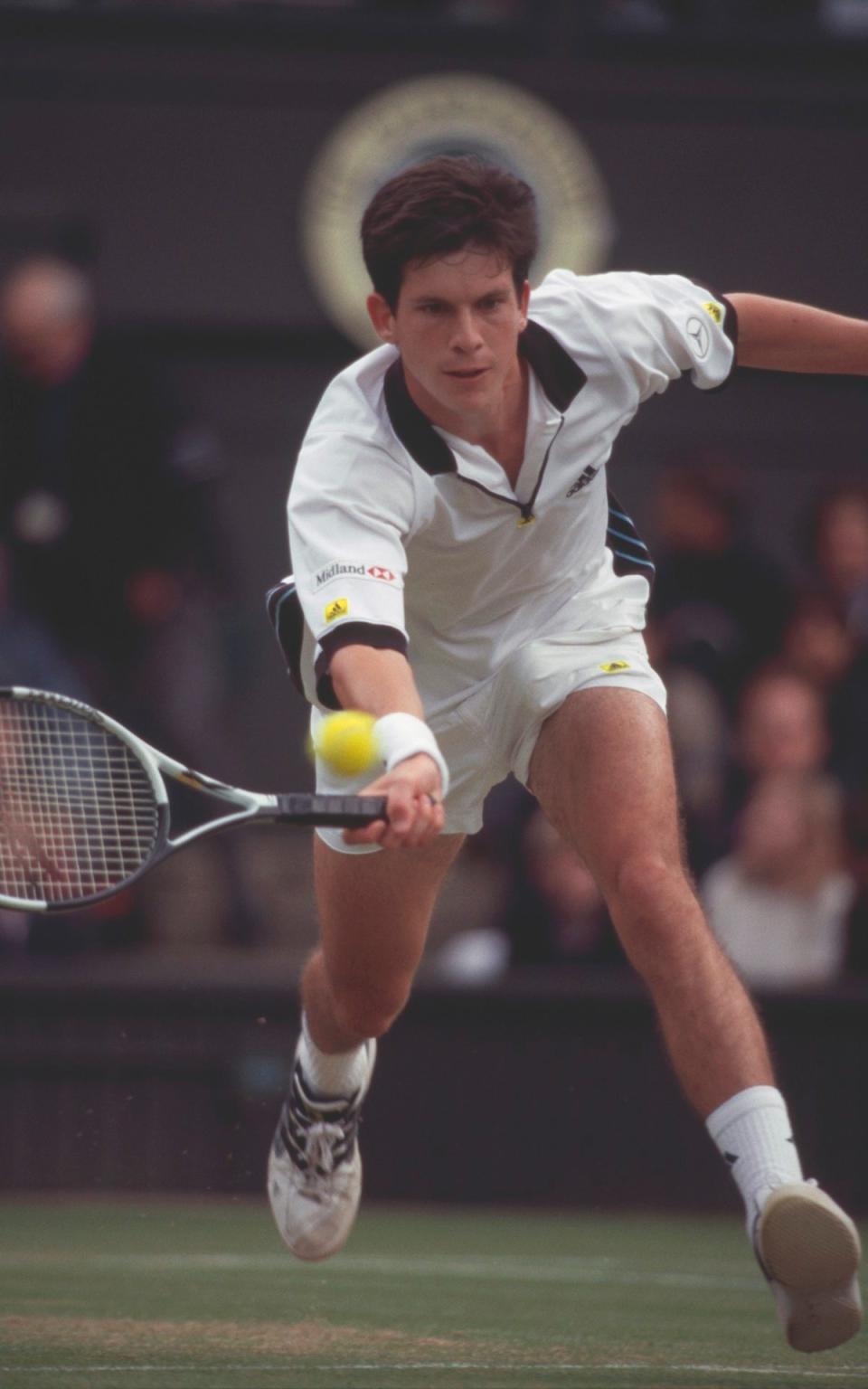
It could be said that the disappointment of never reaching a Wimbledon final burnished Henman’s legend even more. There is nothing the British venerate more than someone who fails heroically, straining every fibre of their being but never quite getting over the finishing line.
Henman takes the suggestion in good part with a nod and a laugh… “Well look, my dream growing up was to win Wimbledon. I think I was good enough to do that, but there were people who were better than me. Sampras was better than me. Federer was better than me. Lleyton Hewitt was better than me.” He shrugs. “It wasn’t meant to be.”
He pauses, then asks, what is success? The question is rhetorical. “I think if you do your best and give 100 per cent in everything you do, you’ll end up being successful. It’s quite easy in sport to quantify everything as winning and losing.
“I would love to have won a Grand Slam. But that wasn’t to be. Ranked four in the world, winning 11 times on the ATP tour and winning an Olympic silver medal was as good as I was meant to be.
“But Wimbledon was absolutely the pinnacle for me, and if I could have played my whole career on one court, it would have been the Centre Court. It was the scene of some of my greatest highlights, but also some of my biggest disappointments. I can’t shy away from that, but it was an amazing journey.
“So when I look back on my career, I have disappointments but no regrets. If you’re looking back thinking, I wish I’d done this, or I wish I’d applied myself more, that would be tough to live with. But I don’t feel that.”
The final reckoning came in August 2007, in Washington, when Henman played the 6ft 10in American rookie John Isner. Isner, he recalls, served 37 aces in the match to defeat him. Afterwards Henman was having a couple of beers with his long-time coach, and one of his best friends, Paul Annacone. “I said, for the first time ever I think this is going to become my job rather than my hobby. And he looked at me and said, if you’re not enjoying it you shouldn’t do it.
“And I said, what, retire? And he said, well if you’re not enjoying it, why are you doing it? And I thought, that makes sense.
“I looked at my schedule, and I had the Davis Cup at Wimbledon in front of a British crowd, and I thought that’s it. And between the second and the fourth beer I’d decided that’s when I was going to stop.”
And that was that. He was about to turn 33 and had been playing tennis – serious tennis – for 17 years. But in the 16 years that have passed since then he hasn’t missed it at all. “I think I kind of ticked that box,” he says. “I love tennis, I love being involved in tennis. But the tournaments, training, travel, discipline, diet, drug testing, whatever – I don’t miss any of it. And I don’t have any inclination to go and play tennis. Part of it is that I don’t think I’m very good anymore. I used to be quite good, but now whenever I stand on a tennis court, I’m thinking my elbow hurts, and I’d much rather be playing golf.”
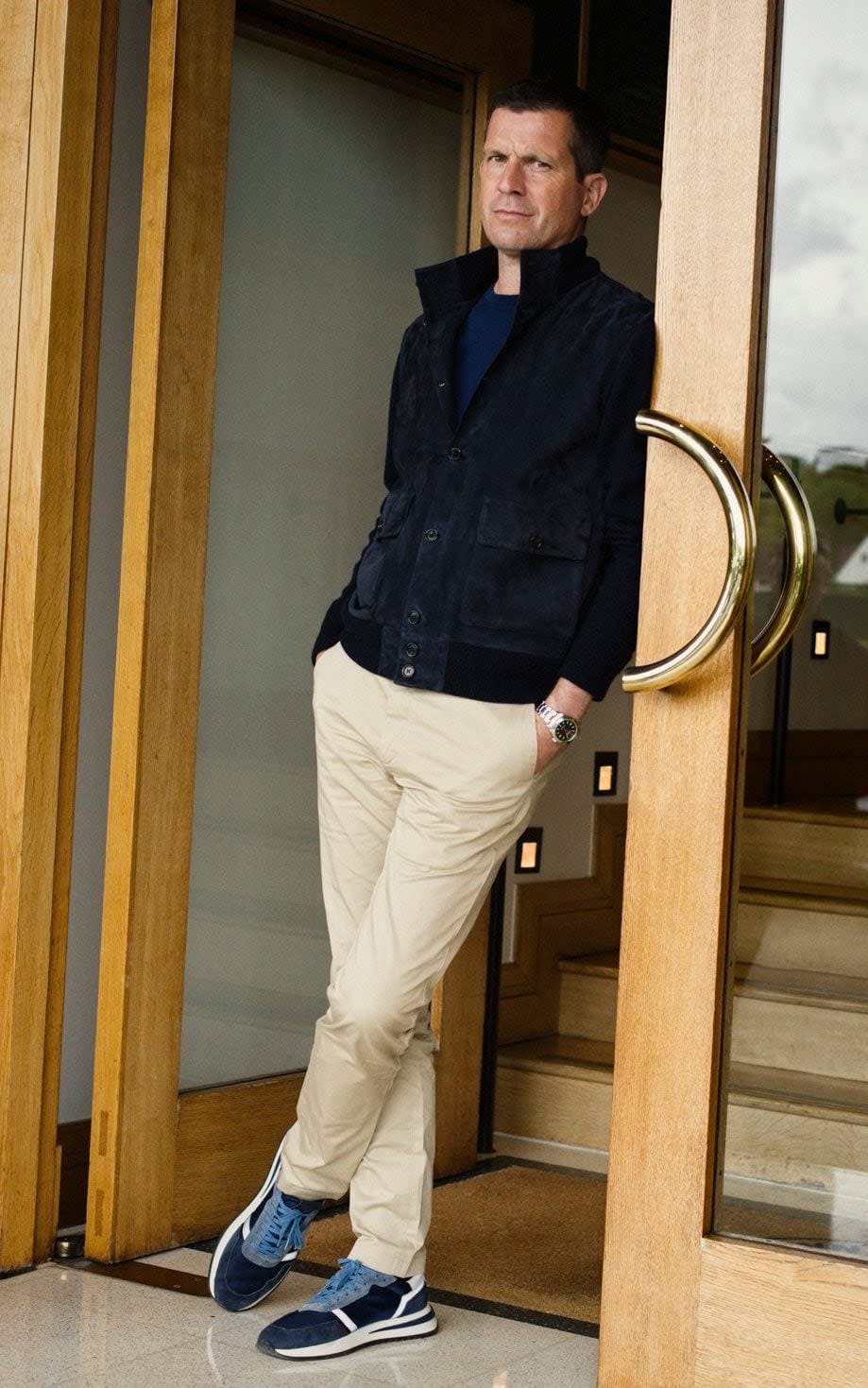
A “golfing addict”, he jokes that he’s on the course “on most days ending in Y” – more realistically, a couple of days a week. He admits that playing golf could never replicate the competitive streak – the self-inflicted pressure – that took him to the top in tennis. “But I don’t need to replicate that. I’m competitive by nature. But I love my social golf and there’s a degree of competition in that environment.”
He is a member at Sunningdale. “So there’s plenty of good players there.” His handicap is +2. “Decent, but there’s room for improvement.”
He can see, he says, how retirement can leave a void for professional sportsmen and women, how they might struggle, but he never felt that at all. “In my mind I wasn’t retiring. I was opening up the chapter of spending more time at home with my family. I’d collected enough air miles and there were lots of other things I wanted to do.”
In 2000 he set up the Tim Henman Foundation, which works with schools providing educational and sporting opportunities, including mentoring and scholarships, for children from vulnerable and disadvantaged backgrounds. Since going up a gear and relaunching in 2015, the foundation has raised more than £3 million and helped more than 62,000 young people.
Last year he ventured back on to the tennis court for a fundraiser for the foundation, playing for 24 hours over a weekend – 12 hours on the Saturday and 12 on the Sunday. “That was my playing quota for quite some time.” For the past 16 years he has also been on the board of the All England Club – a “steep learning curve”, he says, in getting to grips with the other side of tennis, whether it be television rights, partnerships or debentures.
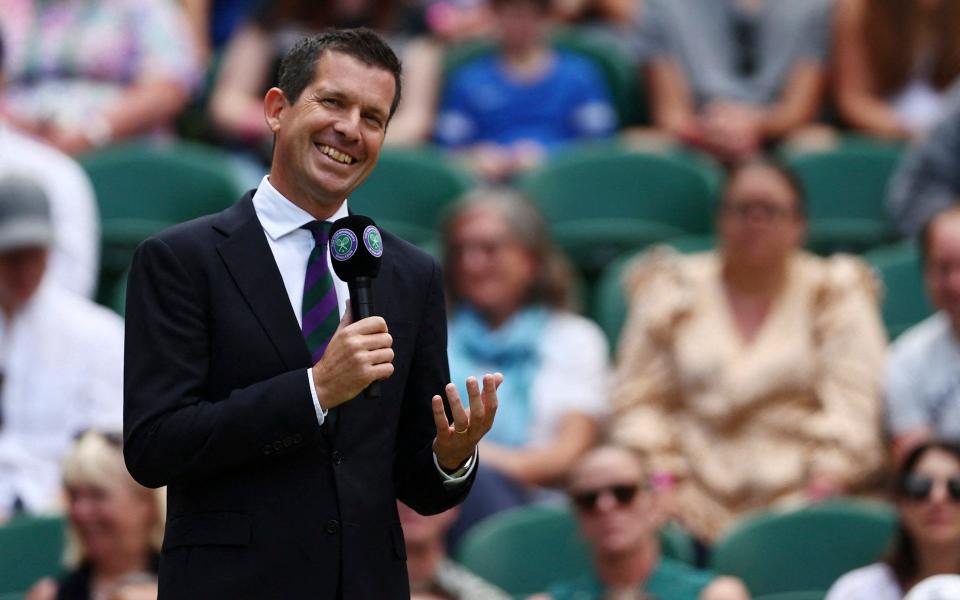
It seems that in the future he would be a natural fit to be chairman of the board. But as he points out, all the board and the chair are “volunteers”, and at the moment his raft of sponsorship arrangements, foremost among them being Rolex, and his work for the BBC would present a conflict of interest. “I don’t think it’s something I could do immediately. And I don’t tend to think that far in advance.”
He will be back in the commentary box for the BBC for the championships.
Just as it was when Henman rose in the sport, tennis is in a time of transition. The age of the big beasts who dominated the sport for more than 15 years is over. Federer has retired. Andy Murray’s best years have passed, although at 37 he continues to defy age and injury to play on. Of that generation, only Djokovic remains imperious.
Should Murray retire? “Definitely not!” The tone is indignant. “There’s been this little bit of a narrative that he’s going to tarnish his image. It’s just garbage. He won three Grand Slams, two Olympic golds and was the world’s number one. Because he loses a few matches, is that going to tarnish his image? I don’t buy it. He should play for as long as he wants, and when he wants to stop, stop.”
The coming crop of young players, Alcaraz and Sinner foremost among them, have “a tough act to follow”, he says. “If you’re the future of the sport and you’re coming after Federer, Nadal and Djokovic, three of the greatest male players of all time, who have 66 Grand Slams between them, the bar is pretty high. But I think Alcaraz and Sinner are incredible, and in the grand scheme of Grand Slam winners, they’re going to win a lot.
“Rivalries are so important in our sport, whether you reflect on Evert and Navratilova; the Williams sisters; Becker and Graf or Agassi and Sampras. We always need the next generation to step up, we need those rivalries and we need them playing in the biggest and best events.”
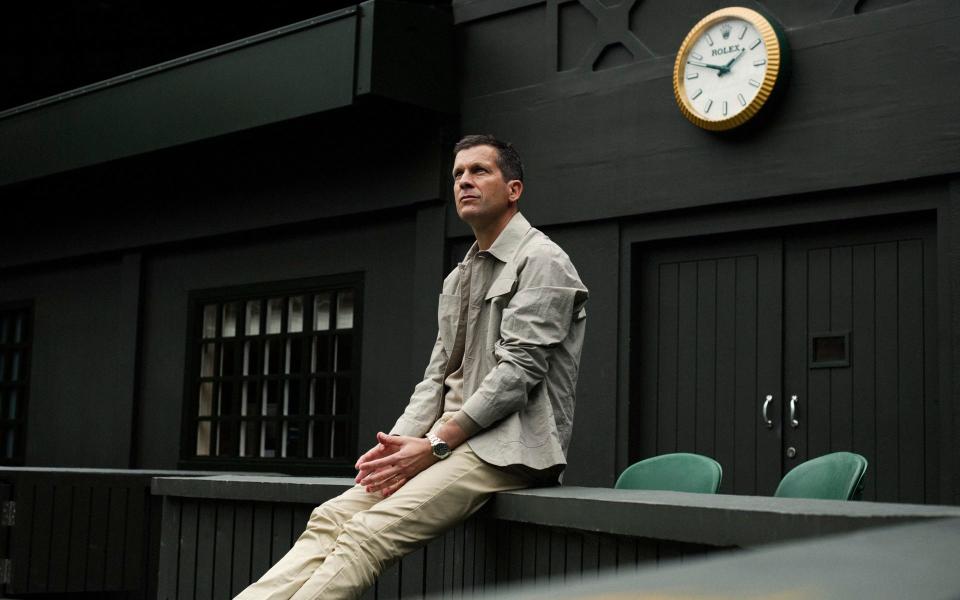
Alacaraz and Sinner, he says, are shaping up to be one of those great rivalries, and he would be surprised not to see one of them in the final. And the winner? He doesn’t hesitate. “Djokovic.”
British tennis, he believes, is in the best place it’s been for a long time. In the men’s game, Cameron Norrie, Dan Evans, Jack Draper and Liam Broady are all in the top 100. “When I was playing, there was myself and Greg Rusedski – there was no strength in depth at all.”
In the women’s game we have Katie Boulter, Harriet Dart, Jodie Burridge and Emma Raducanu. He knows Raducanu well – her coach at the time of her US Open win, Andrew Richardson, is a close friend of Henman’s and was best man at his wedding.
The difficulty she’s faced, Henman says, is having built her career “completely back to front”, winning the American Open in 2021 at 18 having had no real professional experience to speak of, and then being thrown into a punishing calendar of tournaments that exacted a predictable toll in injuries.
“But she’s now working hard and building the foundation to go up again, and she’s playing great tennis. She’s only 21. She could have another 15 years. The wise heads would say, just be patient.”
He’s looking forward to the Championships, of course. He glances around the room, taking in the photographs on the wall – the history, the tradition. “I’m massively passionate about this place and it does feel very much in my blood. When I look back at playing professional tennis, 99 per cent of it I don’t miss. But that final one per cent is walking out on Centre Court, and for me as a British player, playing with that support was incredible.”
He pauses. “I do miss that.”
But I have a hunch the golf clubs are in the boot of his car, ready to help him take his mind off it.

 Yahoo Sport
Yahoo Sport 






































